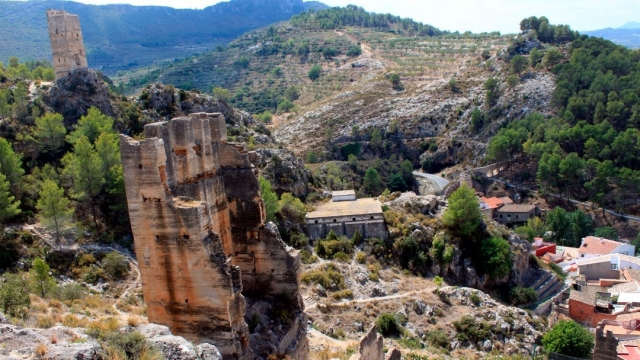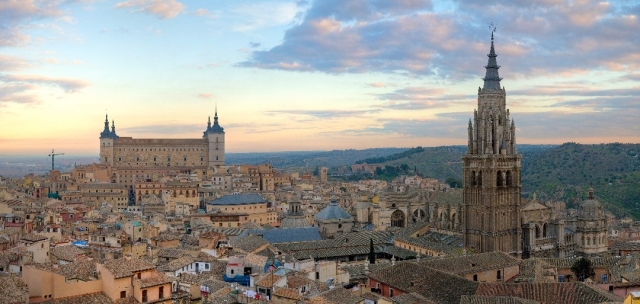The Levante Way
The Levante Way is a Jacobean route that crosses the Iberian Peninsula from east to west, starting from the Mediterranean coast, in the city of Valencia and concluding in Zamora, where it joins with the Via de la Plata, which comes from Andalusia. It is one of the most extensive routes that a pilgrim can travel in the Peninsula, through five autonomous communities, with 27 stages and more than 800 kilometers behind.
The Levante Way: crossing the peninsula from east to west
Despite the great distance between Santiago de Compostela and the city of Valencia, the capital of the Turia has kept its own Jacobean past since medieval times. Valencia, an important Levantine port, was a landing place for pilgrims coming from other regions of Europe with the aim of starting their Jacobean journey here to meet in Santiago with the remains of the Apostle. This migratory movement benefited from the fact that several pilgrims' hospitals in the city were established in the 14th century, also used by pilgrims who embarked on the coast to Rome or Jerusalem.
Many centuries later, to this centenary route that leaves from Valencia we know it like the The Levante Way, one of the alternatives that we will find if we want to peregrinate to Santiago from the Mediterranean coast next to the Route of the Wool, the Camino de Castellón, The Camino de Levante runs through four autonomous communities (Comunidad Valenciana, Castilla-La Mancha, Comunidad de Madrid, Castilla y León) to its connection with the Via de la Plata in Zamora, to continue through Galicia to Santiago de Compostela.
Walking the The Levante Way to Santiago means a long journey of more than 800 kilometers throughout the Spanish geography from east to west, crossing the peninsula and cutting it in half, but also an unforgettable Jacobean experience that can be traversed according to our Possibilities and condition. The Levante Way is signposted in its entirety thanks to the invaluable non-profit work of the Association of Friends of the Camino de Santiago Valencian Community, who also share with the pilgrim information of great utility on this the Jacobean route.
The Levante Waystages
-
Valencia-Algemesí
-
Algemesí-Xátiva
-
Xátiva-Moixent
-
Moixent-La Font de la Figuera
-
La Font de la Figuera-Almansa
-
Almansa-Higueruela
-
Higueruela-Chinchilla de Montearagon
-
Chinchilla del Montearagón-Albacete
-
Albacete-La Roda
-
La Roda-San Clemente
-
San Clemente-Las Pedroñeras
-
Las Pedroñeras-El Toboso
-
El Toboso-La Villa de Don Fadrique
-
La Villa de Don Fadrique -Tembleque
-
Tembleque-Mora
-
Mora-Toledo
-
Toledo-Torrijos
-
Torrijos-Escalona
-
Escalona-San Martín de Valdeiglesias
-
San Martín de Valdeiglesias-Cebreros
-
Cebreros-Avila
-
Avila-Gotarrendura
-
Gotarrendura-Arévalo
-
Arévalo-Medina del Campo
-
Medina del Campo-Siete Iglesias de Trabancos
-
Siete Iglesias de Trabancos-Toro
-
Toro-Zamora
Routes
Blog
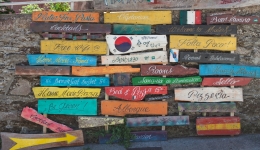 How to get to Sarria to do the Camino de Santiago
How to get to Sarria to do the Camino de Santiago
 Descubre la magia del Camino de Santiago Portugués por la costa
Descubre la magia del Camino de Santiago Portugués por la costa
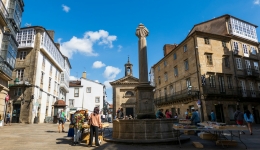 5 tours culturales que puedes hacer en Galicia si decides hacer un alto en el camino
5 tours culturales que puedes hacer en Galicia si decides hacer un alto en el camino
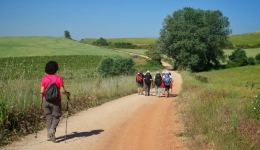 Doing the Camino de Santiago in June: What you should know?
Doing the Camino de Santiago in June: What you should know?
Information
Points of interest
Cities & Towns | Hostels | Lodgings | Restaurants | Saddlery | Doctors | Points of interest | Bikes workshop
Contact us | Privacy policy | Cookies policy | | Terms of use | Authorship | Web Map | Consentimiento
© Copyright LA VOZ DE GALICIA S.A. Polígono de Sabón, Arteixo, A CORUÑA (ESPAÑA) Inscrita en el Registro Mercantil de A Coruña en el Tomo 2438 del Archivo, Sección General, a los folios 91 y siguientes, hoja C-2141. CIF: A-15000649
Developed and managed byHyliacom
